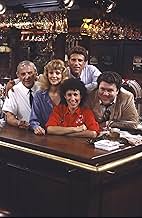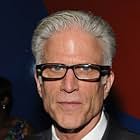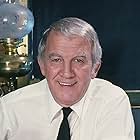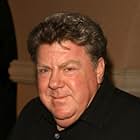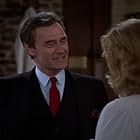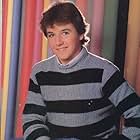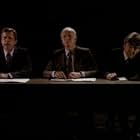Give Me a Ring Sometime
- Episode aired Sep 30, 1982
- TV-PG
- 30m
IMDb RATING
8.1/10
1.5K
YOUR RATING
Diane Chambers makes her home at Cheers when her fiancé leaves her.Diane Chambers makes her home at Cheers when her fiancé leaves her.Diane Chambers makes her home at Cheers when her fiancé leaves her.
Ebon Alabastur
- Bar Patron
- (uncredited)
Buzz Barbee
- Bar Patron
- (uncredited)
Gerald David Bauman
- Bar Patron
- (uncredited)
Bob Bechanic
- Bar Patron
- (uncredited)
David Channell
- Bar Patron
- (uncredited)
Barbara Collier
- Bar Patron
- (uncredited)
Joyce Goldman
- Bar Patron
- (uncredited)
Fritz Hess
- Bar Patron
- (uncredited)
Storyline
Did you know
- TriviaEveryone sitting around the bar tries to name the "sweatiest movie of all time". The actors throw out suggestions and Cliff (John Ratzenberger) suggests Body Heat (1981). One of the supporting actors in that movie was Ted Danson, and just after the movie is mentioned, the camera focuses on Danson.
- GoofsWhen Sumner goes to the back to make a phone call, a crew member can be seen sitting on a wooden chair with a camera beside him, as can a few more people in the distance.
- Alternate versionsEarly syndicated versions of the episode have an edited teaser, omitting Sam's entrance from the pool room in the original version and instead begin the teaser at the point to where the boy enters the bar to buy a beer with his fake ID. Home video versions and recent cable and broadcast syndication versions have the teaser in its entirety.
- ConnectionsFeatured in The 35th Annual Primetime Emmy Awards (1983)
- SoundtracksWhere Everybody Knows Your Name
Written by Judy Hart-Angelo and Gary Portnoy
Performed by Gary Portnoy
Featured review
In order to succeed, a pilot for a TV series needs to establish a premise, introduce the main characters, and persuade viewers to come back for more. By this measure, the pilot for Cheers is the most successful pilot ever.
The DNA of the series is all here in this first half hour. The central concept of the show - this is the ultimate friendly bar, where people go to hang out - is right there from the beginning. The characters are all defined from the start and introduced in succession. There's Sam, the former jock and currently practicing Lothario; Diane, the self-important and flighty intellectual; Coach , the genial Wise Fool of a bartender; Carla, the harried and abrasive working mother; Norm, the lazy life of the party; Cliff, the bar's resident font of useless trivia. There's a crisis that requires Diane to accept a job at Cheers, and the beginnings of sexual tension between the eternal grad student and the "Magnificent Pagan Beast."
The genius of choosing Boston - a city known as much for its love of sports as for its institutes of higher learning - as the location is also clear from the beginning. While fans of the later seasons might complain that this is the "Sam And Diane Show," the culture clash is a big part of what made the series work. Where else can you find references to Proust, Yeats, and Dunne, followed by Cash, Kaline, and Freehan, all in the first act?
The tightness and efficiency of the pilot is all the more amazing considering that the pilot was rewritten prior to airing. It's a well known fact that John Ratzenberger talked his way into a part after losing the role of Norm, but less known is that there was another Cheers regular who was written out at the last minute. Mrs. Littlefield, an elderly woman who ranted about communists and foreigners, made it to the pilot stage but was cut in the end, which turned out to be a smart move. Cheers never really tackled politics, but a female Archie Bunker wasn't the right way to do that.
The acting is top notch, and it's mostly due to Long and Danson. Long plays Diane as the rare Smart Blonde, pretty but lacking any sort of street sense. Danson is more laid back; much of his best moments come from reacting to the others. The rest of the main cast all have little moments where they establish their characters.
Finally, a word about how the pilot looks. At the time sitcoms were increasingly recorded on tape rather than filmed. James Burrows and the Charles brothers insisted on film and it makes a difference. Burrows is, of course, a now legendary sitcom director, and he used some of the same crew he used on Taxi. For this pilot they hired production designer Richard Sylbert, best known for his big screen work on The Graduate, Chinatown, and Reds. Burrows wanted the show to look like the Miller Lite "Less Filling/Tastes Great" commercials, and he succeeded. Comedy works better when the crew takes the production values seriously.
Ironically, the pilot is infamous for being one of the *least* watched shows, coming in dead last in the Nielsen ratings. It's safe to say that most people who did tune in liked what they saw, and with good reason.
The DNA of the series is all here in this first half hour. The central concept of the show - this is the ultimate friendly bar, where people go to hang out - is right there from the beginning. The characters are all defined from the start and introduced in succession. There's Sam, the former jock and currently practicing Lothario; Diane, the self-important and flighty intellectual; Coach , the genial Wise Fool of a bartender; Carla, the harried and abrasive working mother; Norm, the lazy life of the party; Cliff, the bar's resident font of useless trivia. There's a crisis that requires Diane to accept a job at Cheers, and the beginnings of sexual tension between the eternal grad student and the "Magnificent Pagan Beast."
The genius of choosing Boston - a city known as much for its love of sports as for its institutes of higher learning - as the location is also clear from the beginning. While fans of the later seasons might complain that this is the "Sam And Diane Show," the culture clash is a big part of what made the series work. Where else can you find references to Proust, Yeats, and Dunne, followed by Cash, Kaline, and Freehan, all in the first act?
The tightness and efficiency of the pilot is all the more amazing considering that the pilot was rewritten prior to airing. It's a well known fact that John Ratzenberger talked his way into a part after losing the role of Norm, but less known is that there was another Cheers regular who was written out at the last minute. Mrs. Littlefield, an elderly woman who ranted about communists and foreigners, made it to the pilot stage but was cut in the end, which turned out to be a smart move. Cheers never really tackled politics, but a female Archie Bunker wasn't the right way to do that.
The acting is top notch, and it's mostly due to Long and Danson. Long plays Diane as the rare Smart Blonde, pretty but lacking any sort of street sense. Danson is more laid back; much of his best moments come from reacting to the others. The rest of the main cast all have little moments where they establish their characters.
Finally, a word about how the pilot looks. At the time sitcoms were increasingly recorded on tape rather than filmed. James Burrows and the Charles brothers insisted on film and it makes a difference. Burrows is, of course, a now legendary sitcom director, and he used some of the same crew he used on Taxi. For this pilot they hired production designer Richard Sylbert, best known for his big screen work on The Graduate, Chinatown, and Reds. Burrows wanted the show to look like the Miller Lite "Less Filling/Tastes Great" commercials, and he succeeded. Comedy works better when the crew takes the production values seriously.
Ironically, the pilot is infamous for being one of the *least* watched shows, coming in dead last in the Nielsen ratings. It's safe to say that most people who did tune in liked what they saw, and with good reason.
- dgplatt-60121
- Jan 6, 2024
- Permalink
Details
- Release date
- Country of origin
- Language
- Filming locations
- Production companies
- See more company credits at IMDbPro
Contribute to this page
Suggest an edit or add missing content

Top Gap
What is the broadcast (satellite or terrestrial TV) release date of Give Me a Ring Sometime (1982) in Brazil?
Answer





